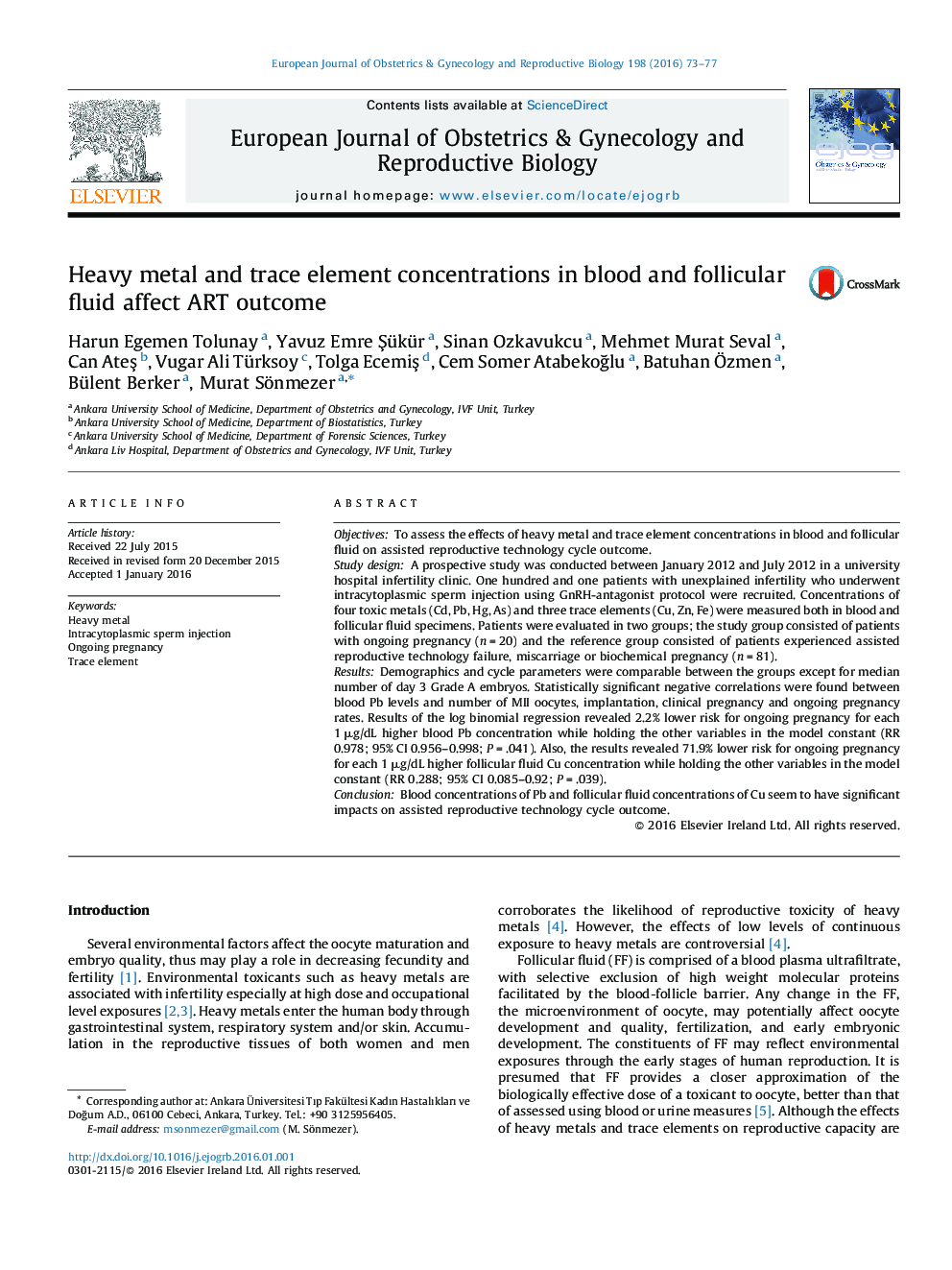| Article ID | Journal | Published Year | Pages | File Type |
|---|---|---|---|---|
| 3919381 | European Journal of Obstetrics & Gynecology and Reproductive Biology | 2016 | 5 Pages |
ObjectivesTo assess the effects of heavy metal and trace element concentrations in blood and follicular fluid on assisted reproductive technology cycle outcome.Study designA prospective study was conducted between January 2012 and July 2012 in a university hospital infertility clinic. One hundred and one patients with unexplained infertility who underwent intracytoplasmic sperm injection using GnRH-antagonist protocol were recruited. Concentrations of four toxic metals (Cd, Pb, Hg, As) and three trace elements (Cu, Zn, Fe) were measured both in blood and follicular fluid specimens. Patients were evaluated in two groups; the study group consisted of patients with ongoing pregnancy (n = 20) and the reference group consisted of patients experienced assisted reproductive technology failure, miscarriage or biochemical pregnancy (n = 81).ResultsDemographics and cycle parameters were comparable between the groups except for median number of day 3 Grade A embryos. Statistically significant negative correlations were found between blood Pb levels and number of MII oocytes, implantation, clinical pregnancy and ongoing pregnancy rates. Results of the log binomial regression revealed 2.2% lower risk for ongoing pregnancy for each 1 μg/dL higher blood Pb concentration while holding the other variables in the model constant (RR 0.978; 95% CI 0.956–0.998; P = .041). Also, the results revealed 71.9% lower risk for ongoing pregnancy for each 1 μg/dL higher follicular fluid Cu concentration while holding the other variables in the model constant (RR 0.288; 95% CI 0.085–0.92; P = .039).ConclusionBlood concentrations of Pb and follicular fluid concentrations of Cu seem to have significant impacts on assisted reproductive technology cycle outcome.
